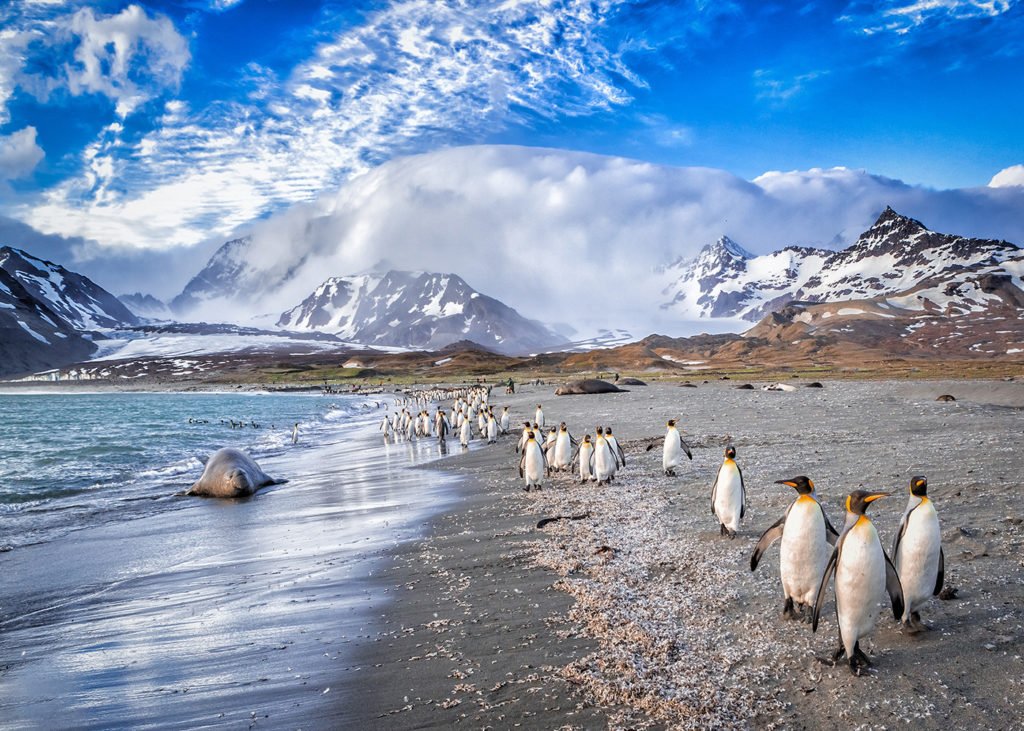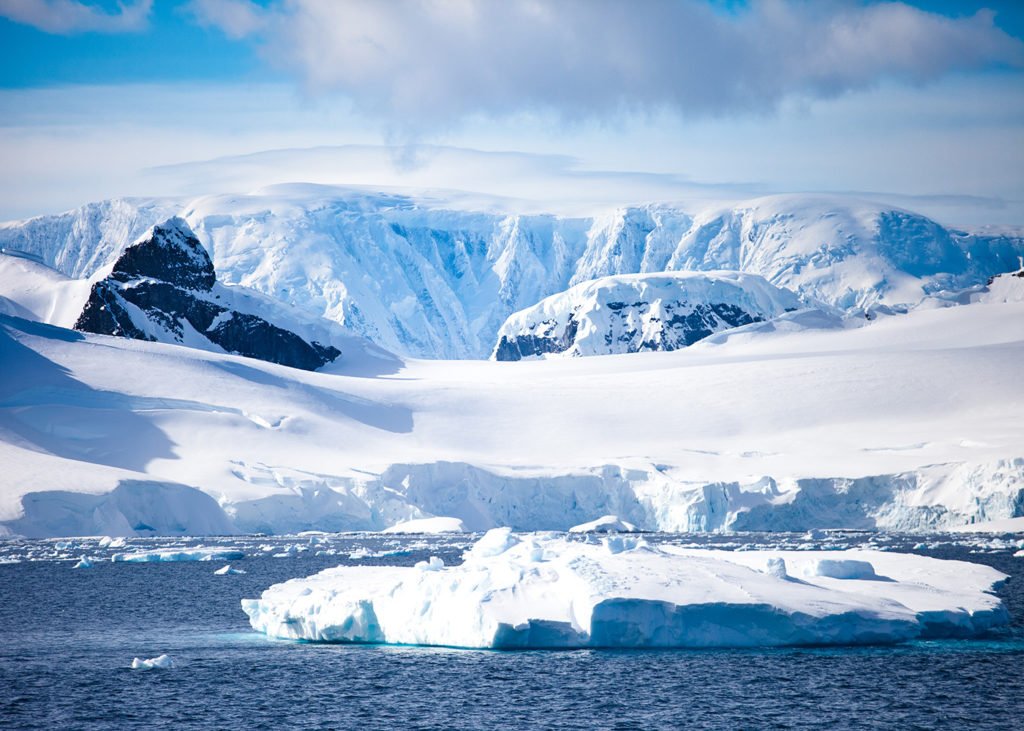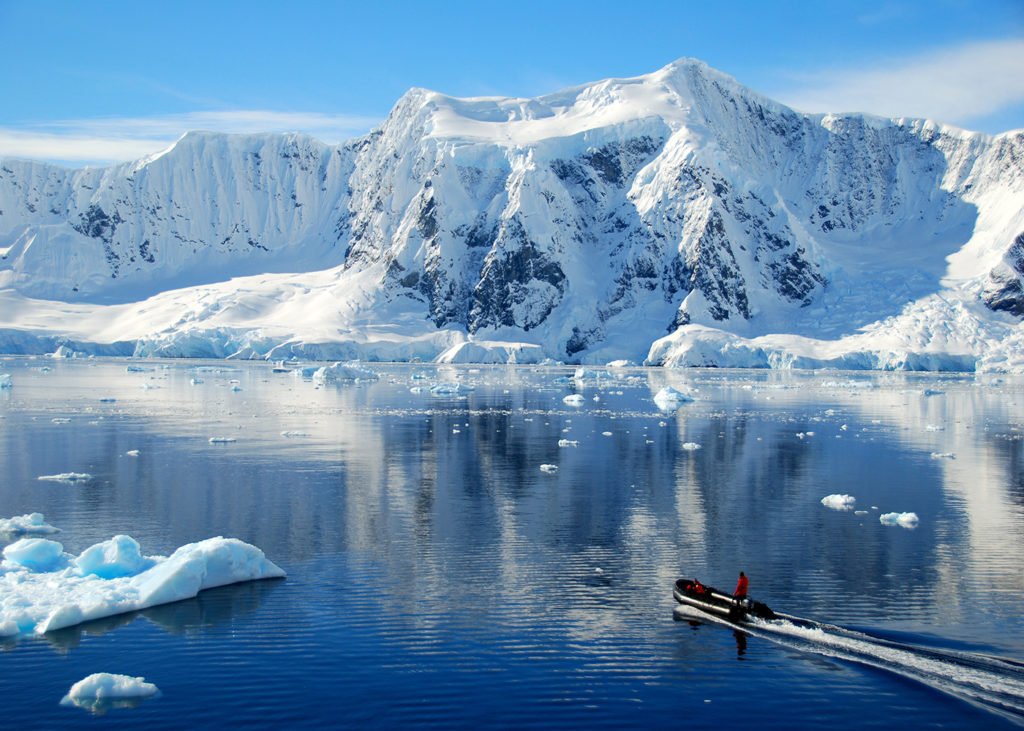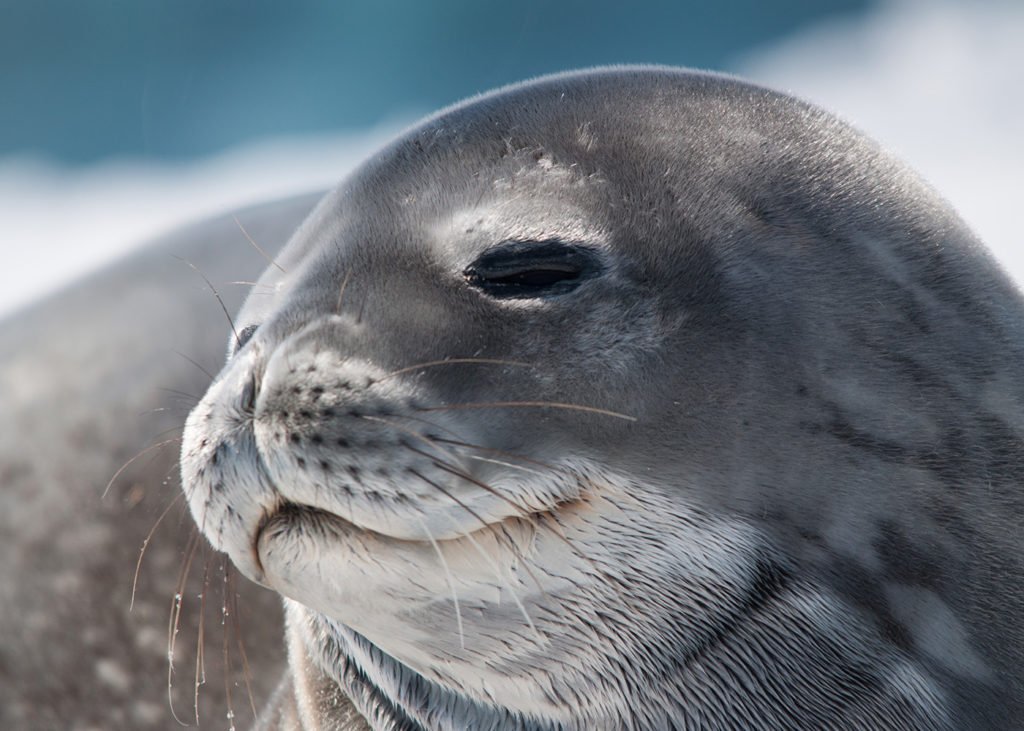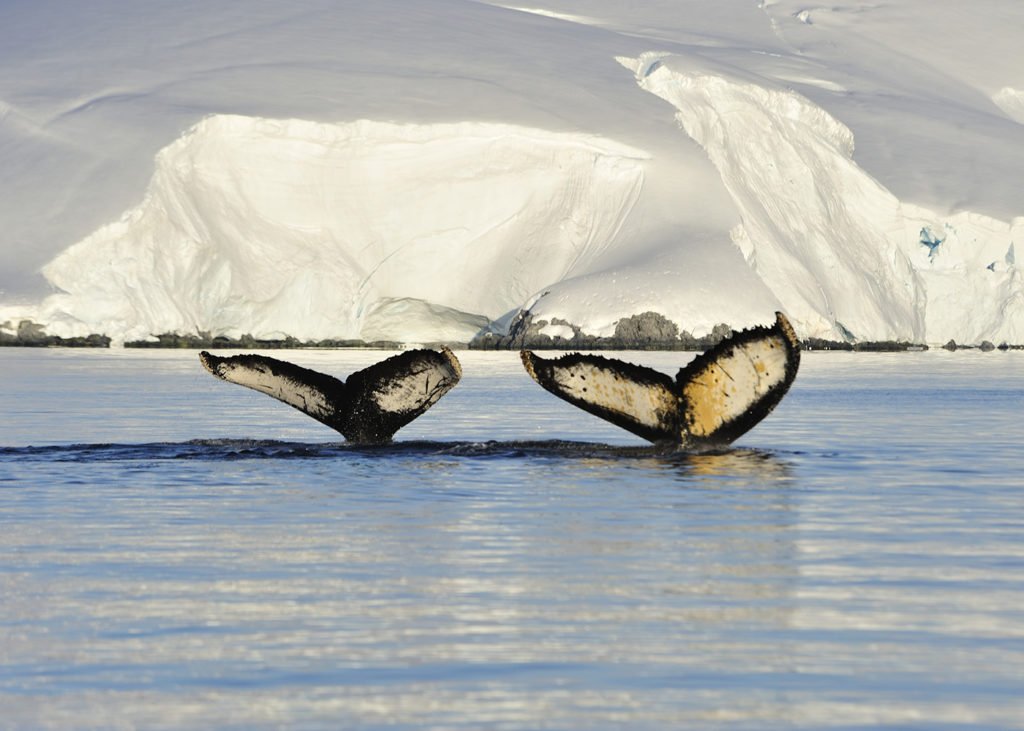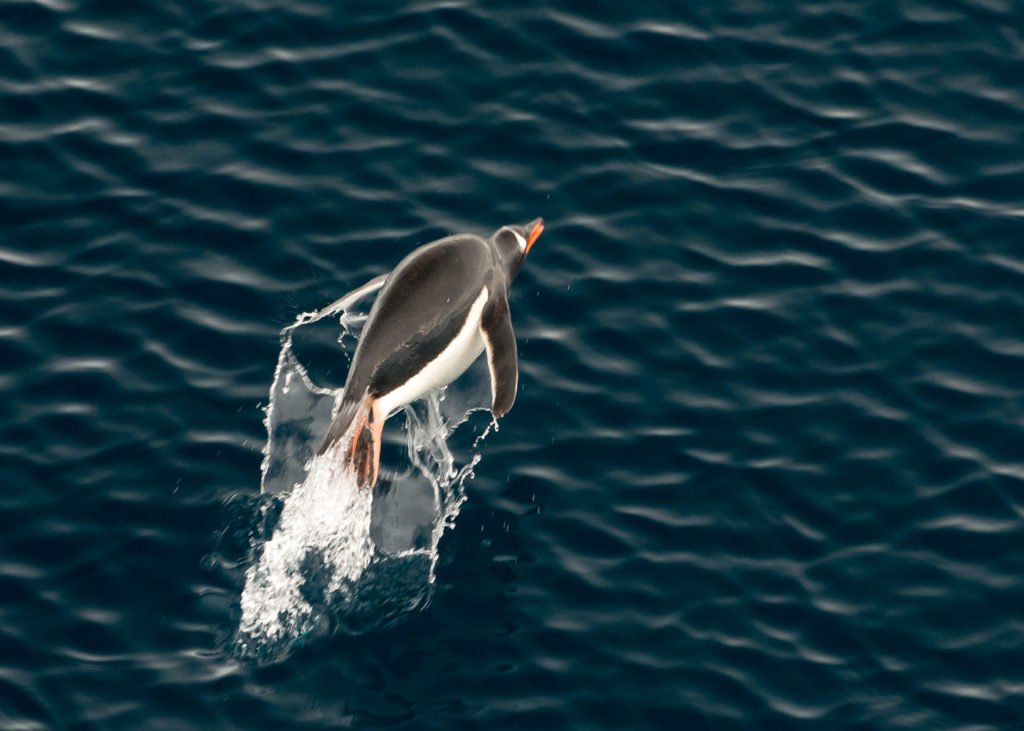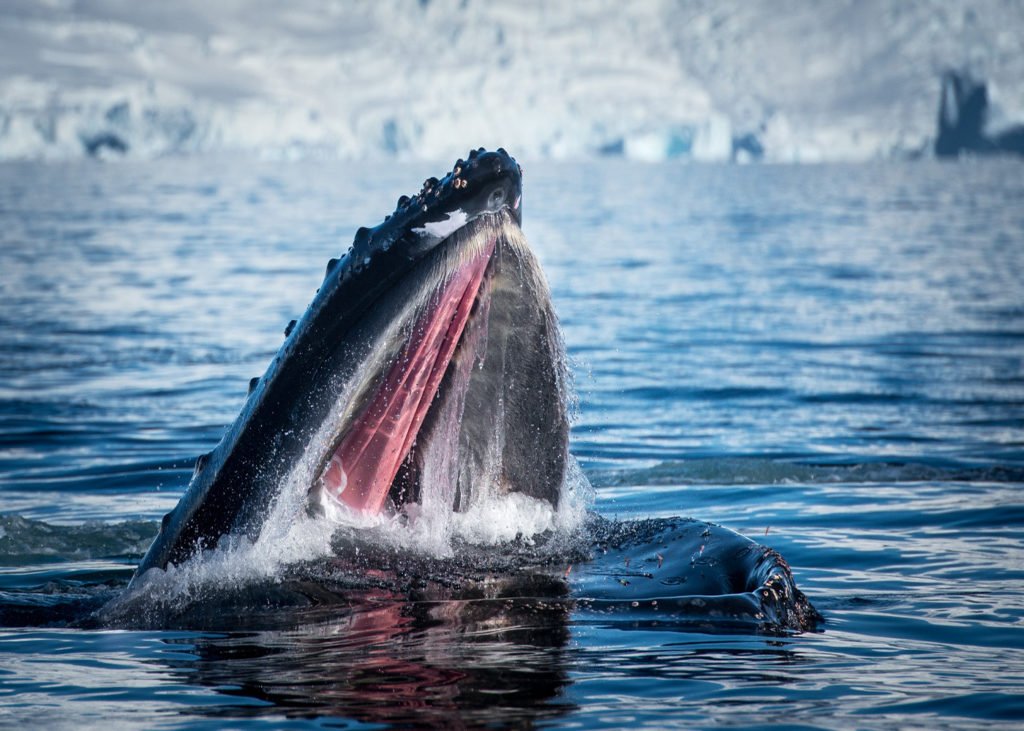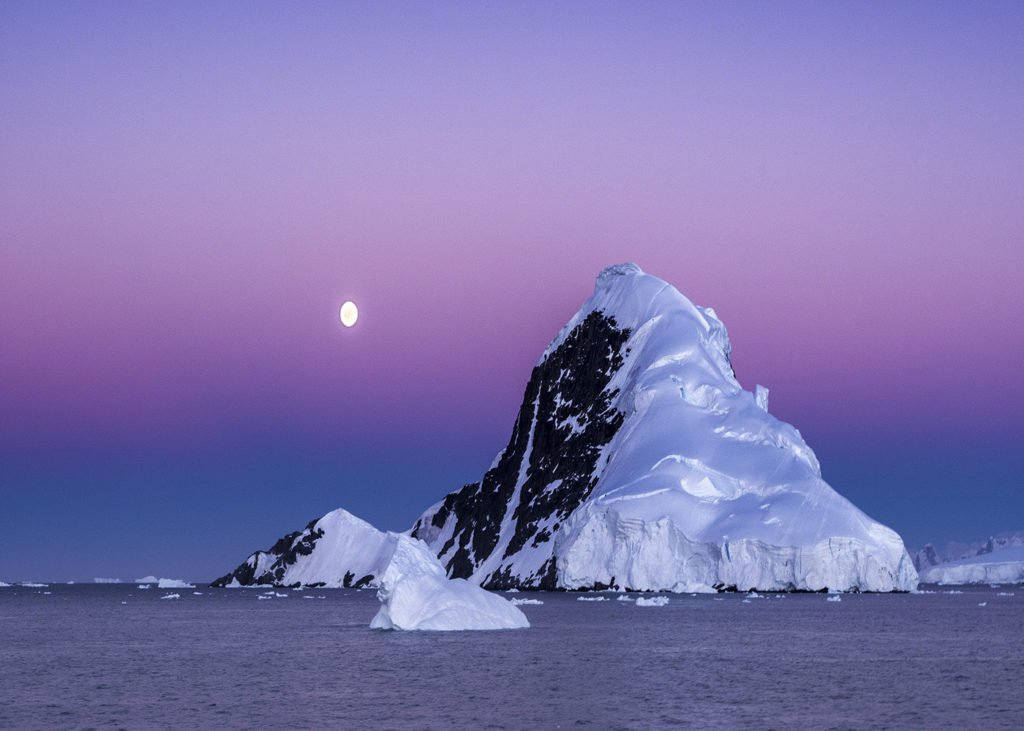Cruise Overview
The Vessel:
Originally built for the United States agency NOAA (National Oceanic & Atmospheric Administration), the Ushuaia has been refurbished to accommodate a maximum of 84 passengers in 41 comfortable twin cabins and suites. The ice-strengthenend polar vessel is a very well appointed and provides ample deck space and an open bridge policy. The full complement of inflatable landing craft ensures superb landings and wildlife viewing opportunities inaccessible coastline. Oublic areas feature a large dining room (one sitting), an observation lounge and bar, a conference room with modern multimedia equiptment, a well-stocked library, a changing room and a small infirmary.
Cabin Types
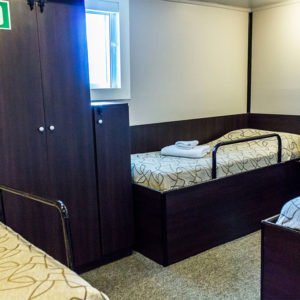
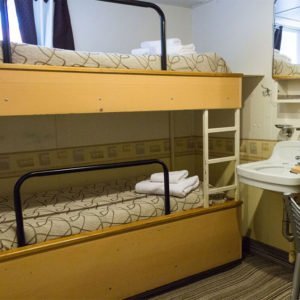
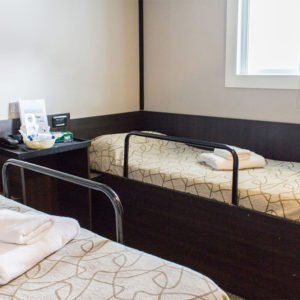
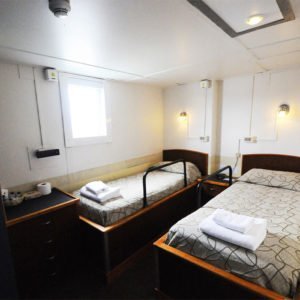
Route Map
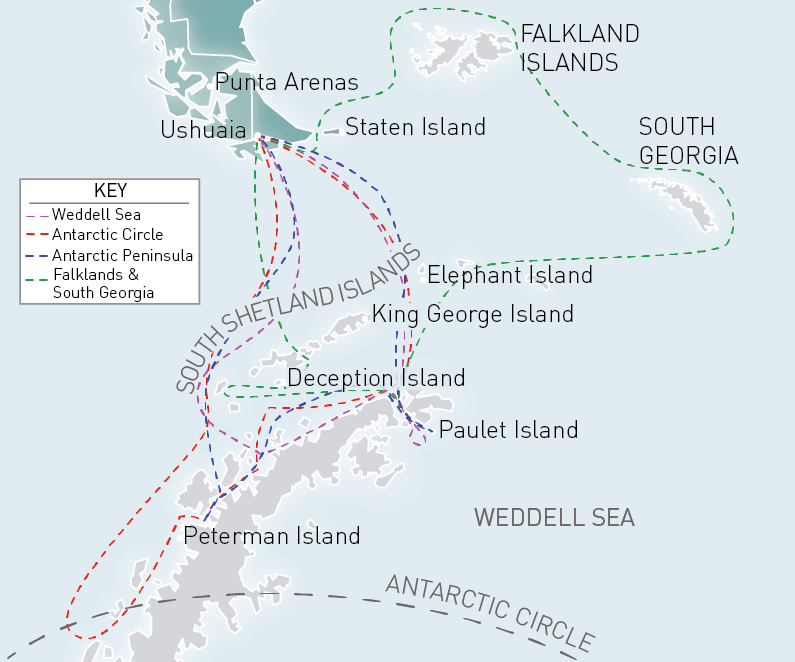
Classic Antarctica
10 Days / 9 Nights
Named after the renowned explorer, Sir Francis Drake, who sailed these waters in 1578, the Drake Passage also marks the Antarctic Convergence, a biological barrier where cold polar water sinks beneath the warmer northern waters. This creates a great upwelling of nutrients, which sustains the biodiversity of this region. The Drake Passage also marks the northern limit of many Antarctic seabirds.
As we sail across the passage, Antarpply Expeditions’ lecturers will be out with you on deck to help in the identification of an amazing variety of seabirds, including many albatrosses, which follow in our wake. The USHUAIA‘s open bridge policy allows you to join our officers on the bridge and learn about navigation, watch for whales, and enjoy the view. A full program of lectures will be offered as well.
The first sightings of icebergs and snow-capped mountains indicate that we have reached the South Shetland Islands, a group of twenty islands and islets first sighted in February 1819 by Capt. William Smith of the brig Williams. With favorable conditions in the Drake Passage our lecturers and naturalists will accompany you ashore as you experience your first encounter with the penguins and seals on Day 3.
The South Shetland Islands are a haven for wildlife. Vast penguin rookeries, beaches ruled by Antarctic fur seals and Southern elephant seals make every day spent in this amazing island group unforgettable. Sailing through the narrow passage into the flooded caldera of Deception Island is truly amazing.
King George Island, the largest of the South Shetland Islands, features colonies of nesting Adélie and Chinstrap Penguins, Kelp Gulls, Blue-eyed Cormorants, Antarctic Terns and Southern Giant Petrels and is home to scientific bases of many different countries. Macaroni, Chinstrap and Gentoo Penguins as well as elephant seals await you at Livingston Island.
The Antarctic Peninsula’s remarkable history will provide you with a type of excitement often only associated with the early explorers. You will have plenty of time to explore its amazing scenery, a pristine wilderness of snow, ice, mountains and waterways, and an incredible wide variety of wildlife. Apart from penguins and seabirds you are very likely to see Weddell, crabeater and leopard seals as well as Minke, killer (orca) and humpback whales at close range.
We hope to navigate some of the most beautiful waterways (depending on the ice conditions): the Gerlache Strait, the Neumayer Channel, and the Lemaire Channel, the latter are narrow passages between towering rock faces and spectacular glaciers.
We plan to make at least two landings per day and possible landing sites may include:
Paradise Bay is perhaps the most aptly named place in the world and we attempt a landing on the continent proper. After negotiating the iceberg-strewn waters of the Antarctic Sound, we hope to visit the bustling Adélie Penguin (over 100,000 pairs breed here) and Blue-eyed Cormorant colonies on Paulet Island. The Nordenskjöld expedition built a stone survival hut here in 1903. Today its ruins have been taken over by nesting penguins.
Further exploration may take you to Melchior Island, Cuverville Island, Portal Point, Neko Harbour, Pléneau Island and if ice conditions permit, to Petermann Island for a visit to the southernmost colony of Gentoo Penguins.
We leave Antarctica and head north across the Drake Passage. Join our lecturers and naturalists on deck as we search for seabirds and whales and enjoy some final lectures. Take the chance to relax and reflect on the fascinating adventures of the past days on the way back to Ushuaia.
Classic South Georgia
20 Days / 19 Nights
In the afternoon we will board the USHUAIA. A welcome drink and then an introduction to the crew and expedition staff will follow, and we will have time to get to know our new shipmates. The ship will then set sail towards the Western Falkland Islands (Malvinas), known for their rugged beauty and wealth of seabirds and waterfowl.
The open bridge policy on the USHUAIA allows us to join the officers on the bridge and learn about navigation, watch for marine life, and enjoy the views of the open ocean. These waters are also home to an interesting group of seabirds, which often ride the currents created in the wake of the ship, such as albatrosses and petrels. Join the expedition staff and naturalists on deck whilst we are at sea as we search for seabirds and other local wildlife, such as orcas and dolphins. An interesting selection of lectures will help us to prepare for our first excursions in the Falkland Islands (Malvinas).
With favorable conditions, our lecturers and naturalists will accompany you on your first excursion. On the western coast we might visit the following islands:
West Point Island
West Point Island lies off the most north-westerly point of mainland West Falkland (Malvinas). The attractive settlement sits on the edge of a small harbor on the eastern side of the Island, in the lee of Black Bog Hill and Michael´s Mount. The valley between these two peaks rolls over the center of the island to the dramatic Devil´s Nose, one of the Island´s main attractions. From here visitors are treated to splendid views of Cliff Mountain, the Island´s highest point at 1,250 ft (381 m), and the highest cliffs in the Falklands (Malvinas). This is where we will encounter a vast colony of Rockhopper Penguins and Black-browed Albatrosses, nesting together in close vicinity.
Carcass Island
Carcass Island lies to the north-west of the Falklands archipelago (Malvinas). A mature tussac plantation covers much of the lower ground below Jason Hill to the east. The availability of abundant cover and the absence of cats, rats and mice throughout the island have made for a spectacularly large population of small birds, which is one of Carcass Island´s most delightful features. Gentoo and Magellanic Penguins do also nest here. Peale´s and Commerson´s dolphins come frequently close to the shoreline to get a glimpse of the visitors as well. At the settlement with its beautiful gardens, we are invited to enjoy tea and cookies with the locals.
Overnight we will sail around the northern islands of the archipelago in easterly direction to reach the capital, Stanley, in the following morning.
In the morning hours we will have time to explore the quaint little town of Stanley and its wonderful Museum, souvenir shops and pubs. The town was established in the early 1840´s. Isolation and the weather conditions made life hard, but progress was gradual and punctuated by the extremely eventful times of involvement in two world wars.
For those who are more interested in the outstanding wildlife the Islands have to offer, you do not even have to leave town to enjoy it. Southern Giant Petrels often fly close to the shoreline. The endemic Falkland Steamer Ducks abound on the shorelines while Kelp Gulls can often be seen flying together with Dolphin Gulls. The less obvious but frequent visitors to Stanley area are Black-crowned Night Herons, Red-backed Hawks and Peregrine Falcons. Turkey Vultures are regularly seen on top of any prominent building. Many pairs of Upland Geese frequent the park and it might be nice to take a stroll around the gardens of town to see some of the singing birds as well.
In the early afternoon it is time to set sail, heading for South Georgia.
An extensive lecture program will be offered during the days at sea. Expert naturalists share their knowledge of the wildlife and unique ecosystems we will encounter throughout our voyage. South Georgia is widely regarded as one of the most beautiful and inspiring places on earth with more wildlife than virtually anywhere else on the planet.
South Georgia will come in sight! Though extremely isolated, it has amazing scenery ranging from high mountains and mighty glaciers to deep fjords and low-lying grassland. If the weather is favourable, we would aim to visit one of the following sites in the late afternoon:
Elsehul
Situated at the northwestern extremity of South Georgia on the eastern side of the knife-edged summit ridges of Parydian Peninsula, Elsehul is a beautiful little harbour. It is the only visitor site on the island, where colonies of Black-browed and Grey-headed Albatrosses can be viewed from zodiacs within the protection of sheltered inshore waters.
Right Whale Bay
Right Whale Bay is a bay 1.5 miles (2.4 km) wide, entered between Craigie Point and Nameless Point along the north coast of South Georgia. The name dates back to at least 1922, when South Georgia was still a centre for commercial whaling. Today we hope to encounter a small colony of King Penguins, along with Giant Petrels, gulls and breeding elephant seals on the black ashen beach.
Our exact itinerary will depend on local land and sea conditions but the following destinations are among those that we would like to explore:
Salisbury Plain
Sometimes called the “Serengeti of the South”, Salisbury Plain is a wildlife site without parallel. Several large glaciers provide a dramatic backdrop for the tens of thousands of King Penguins that nest in the tussac grass of this remarkable ecosystem. The wide beach makes for excellent walking as we visit the colony, where we are literally surrounded and delightfully outnumbered by throngs of curious, gentle penguins. Fur seals also abound, as well as Southern Giant Petrels and the occasional wandering Gentoo Penguin. Prepare for an awe-inspiring experience, as fur seal pups will want to engage with you and can be observed playing at the waterfront.
Prion Island
Prion Island is a beautiful tussac-grass covered islet. If we are lucky we will get the opportunity to see a breeding colony of Wandering Albatross on top of it. We will climb to the summit on a wooden boardwalk, which takes us close to their nests and offers comfortable viewing platforms.
Grytviken
Grytviken lies within King Edward Cove, a sheltered harbor tucked between Hope Point and Hobart Rock on the western shore of Cumberland East Bay. The rusting ruins of the Grytviken whaling station are situated on a level plain at the head of the cove, backed by steep hills and mountains. Now the site of the South Georgia Museum, the station remains a focal point of interest for many visitors, as does Sir Ernest Shackleton´s grave in the nearby whaler´s cemetery and his memorial cross on Hope Point.
The scenery in this area is exceptionally beautiful even by South Georgia standards: the glaciers and snow covered peaks of the Allardyce Range – Mt. Sugartop, Mt. Paget, Mt. Roots, Nordenskjöld Peak, Mt. Kling and Mt. Brooker – form a magnificent backdrop to the cove, and the views from King Edward Point in particular, must be among the finest on earth.
Godthul
Situated 9km east of Cumberland East Bay on the eastern shores of Barff Peninsula, Godthul is a 3km long inlet that lies between Cape George and Long Point. Gentoo Penguins are abundant on the tussac plateau and Light-mantled Sooty Albatrosses echo off the natural cliff amphitheater that encircles the harbor. A floating factory ship serviced by two whale catchers was stationed here each summer between 1908 and 1929. A small shore depot supporting the whaling operations was established close by the stream in the southeast corner of the harbor, and the rusting barrels, wooden shed and boats are fascinating relics of the whaling era, as is the impressive collection of whale and elephant seal bones scattered along the beach.
St Andrews Bay
The surf beaten coastline at St. Andrews Bay runs north-south in a 1.86 mile (3 km) long uninterrupted sweep of fine dark sand, covered in penguins and seals and bounded in the interior by the Cook, Buxton and Heaney Glaciers. The bay hosts the biggest colony of King Penguins on South Georgia. Early in the season, the beach is also carpeted with fur and elephant seals. Such a large assemblage of wildlife attracts an entourage of persistent and voracious scavengers. Sheathbills dart in and around the penguin colony. Cape Petrels nest in a small number on the cliffs north of St. Andrews Bay. Leopard seals patrol the rocks at this end of the beach too, hunting for penguins along the edge of kelp beds. A few White-chinned Petrels and Light-mantled Sooty Albatrosses nest on the tussac slopes. Brown Skuas and Antarctic Terns breed on the outwash plain and scree slopes at the north end of the beach, defending their nest sites with their characteristic noise and vigor.
Cooper Bay
Cooper Bay is found at the southeast extremity of South Georgia. There is a wealth of wildlife at this site, in a spectacular setting. Chinstrap, Gentoo and maybe one or two Macaroni Penguins dot the tussac slopes and there are plenty of fur seals on the beaches. Fascinating volcanic rocks tower over small fjords, giving a stunning invitation for a thrilling zodiac cruise to watch wildlife from the waterfront.
Drygalski Fjord
Drygalski Fjord is also located in the far south east of the island. The glaciers found in this dramatic fjord have retreated significantly in recent decades, but they still remain one of the most striking features of this coastline, particularly the Risting and Jenkins Glaciers. With a little luck, we might see the glaciers calve and witness the birth of a new iceberg from on board the ship.
We spend the next two days crossing the Scotia Sea towards the Antarctic Peninsula offering opportunities to be out on deck, catch up on some reading, check through and edit our photos, or simply reflect on the magical experiences of the last days on South Georgia. Lectures and other activities will be offered throughout these days.
We hope to have a chance to visit the enigmatic Elephant Island. Sir Ernest Shackleton fans will need no introduction to this historic windswept island. In 1916 Shackleton was forced to leave 22 of his men stranded on these shores, while he and five others embarked on an unbelievable last-ditch rescue attempt. What followed is one of the greatest rescue stories of all time. Every passenger will return with a greater knowledge of this gripping tale of adventure in a truly remarkable part of the world.
Our expedition team will prepare you for our experience in the Antarctic Peninsula and South Shetland Islands.
Later today, we hope to arrive at the Antarctic Peninsula in the area of the scenic Antarctic Sound. Here we will try to land at one of the following landing sites:
Argentine Antarctic Station Esperanza
We will try to sail the passage to the east side of the Antarctic Peninsula, which traverses the Antarctic Sound and runs northwest-to-southeast. Hope Bay and the Argentine Station Esperanza are located on the western side of the Sound.
Brown Bluff
Brown Bluff, a promontory on the Tabarin Peninsula, is located south of Hope Bay. Both of them might be possible landing sites. The Weddell Sea represents the center of the Peninsula´s Adélie Penguin population.
Our expedition team will prepare you for our experience in the Antarctic Peninsula and South Shetland Islands.
Gerlache Strait
This region of broad straits, mountainous islands, protected bays, and narrow channels offer moments of solitude. A profusion of tall peaks humans have never climbed and vast glaciers flowing inexorably seaward are the physical features here.
Hydrurga Rocks
We might visit Hydrurga Rocks, a small group of islets, which lie east of Two Hummock Island in the Palmer Archipelago, at the northern entrance of the Gerlache Strait. Chinstrap Penguins, Blue-eyed Shags and Kelp Gulls are confirmed breeders here.
Cuverville Island
We may also go to Cuverville Island, which lies in the scenic Errera Channel, in the center of the Gerlache Strait. A well-defined raised beach forms a nesting site for many Gentoo Penguins here. On our way north we plan to explore the South Shetland Islands.
Deception Island
We plan to sail through the narrow passage into the flooded caldera of Deception Island – the largest of three recent volcanic centers in the South Shetlands- which is truly amazing. Once inside, the rising slope of the black, cinder-covered volcanic rim can be walked uphill to a rather spectacular vantage point.
Half Moon Island
This crescent-shaped island, in the entrance of Moon Bay between Greenwich and Livingston Islands, is home to Chinstrap Penguins in breathtaking surroundings.
We arrive at the port of Ushuaia in the early morning and disembark the USHUAIA after breakfast.
Please note: The above itinerary is a guide only. Our exact route and program will vary to take best advantage of local weather and ice conditions and opportunities to view wildlife. Changes will be made by the Captain and/or Expedition Leader to facilitate the best results from the prevailing conditions. A daily program sheet will be issued on board. Flexibility is the key to success.
Weddell Sea Quest
11 Days / 10 Nights
Named after the renowned explorer, Sir Francis Drake, who sailed these waters in 1578, the Drake Passage also marks the Antarctic Convergence, a biological barrier where cold polar water sinks beneath the warmer northern waters. This creates a great upwelling of nutrients, which sustains the biodiversity of this region. The Drake Passage also marks the northern limit of many Antarctic seabirds.
As we sail across the passage, Antarpply Expeditions’ lecturers will be out with you on deck to help with the identification of an amazing variety of seabirds, including many albatrosses, which follow in our wake. The USHUAIA´s open bridge policy allows you to join our officers on the bridge and learn about navigation, watch for whales, and enjoy the view. A full program of lectures will be offered as well.
The first sightings of icebergs and snow-capped mountains indicate that we have reached the South Shetland Islands, a group of twenty islands and islets first sighted in February 1819 by Capt. William Smith of the brig Williams. With favorable conditions in the Drake Passage our lecturers and naturalists will accompany you ashore as you experience your first encounter with the penguins and seals on Day 3.
This is where huge tabular icebergs roam. In some years, the Erebus & Terror Gulf and Weddell Sea are chock-a-block full with ice, making for exciting ice navigation. Get up early and go out on deck. It may be 3:30h in the morning, but the sunrises will be unlike anything you´ve ever seen. Huge tabular bergs break from the Larsen, Ronne, and Filchner ice shelves and combine with one-year-old and multi-year sea ice to produce a floating, undulating panorama of rugged ice scenery. All-white Snow Petrels are likely to be coursing over the floes, often joined by Pintado Petrels.
The usual passage to the east side of the Antarctic Peninsula traverses the Antarctic Sound, which is 30 miles (48 km) long and 7-12 miles (11-19 km) wide and runs northwest-to-southeast. Hope Bay and the Argentine Station Esperanza, are located on the western side of the Sound. Brown Bluff, a promontory on the Tabarin Peninsula, is located south of Hope Bay. Both of them might be possible landing sites. The Weddell Sea represents the center of the Peninsula´s Adélie Penguin population. Devil Island, Paulet Island and the already mentioned sites, might give us ample proof of this. The numbers of penguins are breathtaking. Sometimes juvenile Emperor Penguins have been sighted, riding ice floes but are by no means regular in the area.
This region also teems with vibrant exploration history. The most bizarre of these tales involves the Swedish Antarctic Expedition of 1901-03 under the command of geologist Otto Nordenskjöld. Four visitor sites have links to this expedition: Hope Bay, Paulet Island, Snow Hill Island, and Cape Well-Met on Vega Island. Our expedition staff will be pleased to share their exciting story with you. Nordenskjöld´s expedition was the first to overwinter in the Peninsula. His ship the Antarctic, under the command of the famous Norwegian whaling captain Carl Anton Larsen, was trapped in the ice and sank, but the men survived on different locations and even managed to carry out significant scientific research in the area.
The Antarctic Peninsula´s remarkable history will also provide you with a type of excitement often only associated with the early explorers. You will have plenty of time to explore its amazing scenery, a pristine wilderness of snow, ice, mountains and waterways and a wide variety of wildlife. Apart from Gentoo and Chinstrap Penguins and other seabirds you are likely to encounter Weddell, crabeater and leopard seals as well as Minke whales and orcas at close range.
We hope to navigate some of the most beautiful waterways: the Gerlache Strait, Errera Channel and Neumayer Channel. Possible landing sites may include: Paradise Bay, which is perhaps the most aptly named place in the world with its impressive glacial fronts and mountains, Cuverville Island, home of the biggest Gentoo Penguin colony in the Peninsula surrounded by glaciers and castellated icebergs, and the British Museum and Post office at Port Lockroy.
Further exploration will lead us to the South Shetland Islands. The volcanic island group is a haven for wildlife. Vast penguin rookeries and seals hauling out on the shorelines make every day spent here unforgettable. Sailing through the narrow passage into the flooded caldera of Deception Island is truly amazing, so is visiting the crescent shaped island Half Moon, home to Chinstrap Penguins in breathtaking surroundings.
There might also be a chance to visit the enigmatic Elephant Island. Sir Ernest Shackleton fans will need no introduction to this historic windswept island. In 1916 Shackleton was forced to leave 22 of his men stranded on these shores, while he and five others embarked on an unbelievable last-ditch rescue attempt. What followed is one of the greatest rescue stories of all time. Every passenger will return with a greater knowledge of this gripping tale of adventure in a truly remarkable part of the world.
We leave Antarctica and head north across the Drake Passage. Join our lecturers and naturalists on deck as we search for seabirds and whales and enjoy some final lectures. Take the chance to relax and reflect on the fascinating adventures of the past days on the way back to Ushuaia.
We arrive at the port of Ushuaia in the early morning and disembark the USHUAIA after breakfast.
Please note: The above itinerary is a guide only. Our exact route and program will vary to take best advantage of local weather and ice conditions and opportunities to view wildlife. Changes will be made by the Captain and/or Expedition Leader to facilitate the best results from the prevailing conditions and they will try their best to reach the Weddell Sea. However if ice conditions do not allow access the route might be changed to West Antarctica. A daily program sheet will be issued on board. Flexibility is the key to success.
Polar Circle Quest
12 Days / 11 Nights
Named after the renowned explorer, Sir Francis Drake, who sailed these waters in 1578, the Drake Passage also marks the Antarctic Convergence, a biological barrier where cold polar water sinks beneath the warmer northern waters. This creates a great upwelling of nutrients, which sustains the biodiversity of this region. The Drake Passage also marks the northern limit of many Antarctic seabirds. As we sail across the passage, Antarpply Expeditions’ lecturers will be out with you on deck to help with the identification of an amazing variety of seabirds, including many albatrosses, which follow in our wake.
The USHUAIA‘s open bridge policy allows you to join our officers on the bridge and learn about navigation, watch for whales, and enjoy the view. A full program of lectures will be offered as well.
The first sightings of icebergs and snow-capped mountains indicate that we have reached the South Shetland Islands, a group of twenty islands and islets first sighted in February 1819 by Capt. William Smith of the brig Williams. With favorable conditions in the Drake Passage our lecturers and naturalists will accompany you ashore as you experience your first encounter with the penguins and seals on Day 3.
Exquisite beauty and pristine landscapes are waiting for you on the western side of the Antarctic Peninsula. Myriads of icebergs with different shades and shapes are floating free in the waterways around the continent. The Antarctic Peninsula’s remarkable history will also provide you with a type of excitement often only associated with the early explorers. You will have plenty of time to explore its amazing scenery and a wide variety of wildlife. Apart from Adélie, Gentoo and Chinstrap Penguins and other seabirds you are likely to encounter Weddell, crabeater, fur and leopard seals as well as Minke whales and orcas at close range. At this time of year it is also very likely to encounter big cetaceans, such as humpback, Finn and Sei whales in the area.
We hope to navigate some of the most beautiful waterways the area has to offer, such as: the Gerlache Strait, Errera Channel, Neumayer Channel and the extremely narrow Lemaire Channel. Possible landing sites may include: Paradise Bay, which is perhaps the most aptly named place in the world with its impressive glacial fronts and mountains, Cuverville Island, home of the biggest Gentoo Penguin colony in the Peninsula surrounded by glaciers and castellated icebergs, and the British Museum and Post office Port Lockroy.
As further exploration will lead us far South of the Lemaire Channel in quest of the Polar Circle, we might also visit the Ukrainian Station Vernadsky, the former British base Faradey, where the ozone hole was first spotted, the rugged Yalour Islands and south of the Polar Circle Detaille Island.
On our way North we plan to explore the South Shetland Islands. The volcanic island group is a haven for wildlife. Vast penguin rookeries and seals hauling out on the shorelines make every day spent here unforgettable. Sailing through the narrow passage into the flooded caldera of Deception Island is truly amazing, so is visiting the crescent shaped island Half Moon, home to Chinstrap Penguins in breathtaking surroundings.
We leave Antarctica and head north across the Drake Passage. Join our lecturers and naturalists on deck as we search for seabirds and whales and enjoy some final lectures. Take the chance to relax and reflect on the fascinating adventures of the past days on the way back to Ushuaia.
We arrive at the port of Ushuaia in the early morning and disembark the USHUAIA after breakfast.
Please note: The above itinerary is a guide only. Our exact route and program will vary to take best advantage of local weather and ice conditions and opportunities to view wildlife. Changes will be made by the Captain and/or Expedition Leader to facilitate the best results from the prevailing conditions and they will try their best to reach the Polar Circle. However if ice conditions do not allow access the route might be changed. A daily program sheet will be issued on board. Flexibility is the key to success.
Tour Inclusions
- Accommodation in selected cabin
- Excursions by zodiac
- Lecture program
- Meals as per itinerary
- Expedition shell (jacket)
- Onboard boot rental
Tour Exclusions
- Any airfare
- Pre and post accommodation
- Fuel surcharge
- Port charges
- Personal expenses
- Tips
